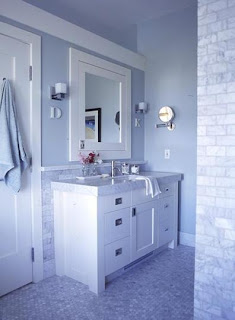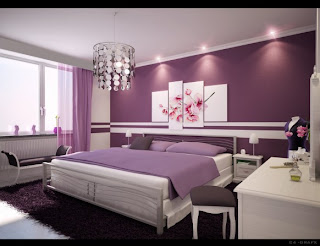by Jennifer Kelly, VIA ArchitectureArchitects have long intuited that the places we inhabit can affect our thoughts, feelings and behaviors. Now behavioral scientists are giving their hunches an empirical basis.
Scientists are unearthing tantalizing clues about how to design spaces that promote creativity, keep students focused and alert, and lead to relaxation and social intimacy. The results inform architectural and design decisions such as the height of ceilings, the view from windows, the shape of furniture, and the type and intensity of lighting.
Such efforts are leading to cutting-edge projects such as residences for seniors with dementia in which the building itself is part of the treatment. [source]
Ceiling Height Back in 2007, Joan Meyers-Levy, a marketing professor at the University of Minnesota, wrote a paper that found that an individual's thoughts and actions were affected by the height of the ceiling:
“When a person is in a space with a 10-foot ceiling, they will tend to think more freely, more abstractly. They might process more abstract connections between objects in a room, whereas a person in a room with an 8-foot ceiling will be more likely to focus on specifics.”
An Art Studio is better suited for high ceilings
But Meyers-Levy is quick to point out that there are good reasons for a low-ceiling height; like in an operating room where you want the surgeon to "focus on specifics."
Building ViewsWhat about the view that you have from your office or living room window? It would be easy to assume that if you had a window that looked out at trees, fields, etc., that you would be more distracted than if you had no view.
Quite the opposite is true -- a study by an environmental psychologist found that views of natural settings actually improve focus. Other studies along the same lines have even found that children with ADD are more focused after being able to observe "green space."
Great deck design (and not just for a view out the window, but a chance to relax before getting back to work!)
But what if your office or home is located in the middle of a city where your only option is an urban view?
While people already have a tendency to feel relaxed / rejuvenated by nature, psychologist Stephen Kaplan proposed that urban settings are too stimulating and that paying attention to them requires more work than a view of nature.
We can counteract this over-stimulation, by adding greenery to our windows and our decks, or living in a building that has a rooftop garden, so that, even for a moment, we can focus on nature and forget the bustle of the city below.
ColorEvery interior designer knows that the colors in a room can affect mood. Restaurant owners choose colors and designs that either encourage customers to stay and enjoy the evening (soft cushions, low light), or to eat quickly and move on so that they can seat more customers (bright colors, hard seats).
There are also times when individuals will pick out a color they think they like for their walls and furniture, but once the room is painted and furniture arranged, they find they feel uncomfortable. So before choosing your colors, take time to think about the emotions you want to bring out in a particular room:
Blue brings a calming feeling of serenity and is great for bathrooms or living rooms. But dark blue can evoke feelings of sadness, so refrain from using it as a main color in a room (see image below with dark blue as just accents):
Yellow is a "happy" color that lightens your mood and can help you feel more carefree. It is a great color for kitchens, where many people start their day, and is one of the most used rooms in the house. (beware of red, orange, and brown, which evoke feelings of hunger):
Red is the color of passion, and can evoke intense feelings like love or anger. Perhaps a bedroom with red is a good choice, although it should only be used as accents, and not as a dominant color, as it could promote restlessness:
Orange encourages an enthusiastic mood, and would be a great color for a children's playroom or for an exercise room (but not for a baby's nursery, as it can be too overstimulating).
It can also be a great color for social gatherings, or to increase appetite (like if you want your loved one to make sure they get a great breakfast in the morning):
Green evokes a feeling of the outdoors and can help alleviate stress. With those qualifications, it would be great in any room:
(if you want to create a real forest, instead of just simulate one) link Purple can also bring out a passionate mood -- bonus: the darker the shade, the more passionate you feel. It is also associated with luxury and royalty. If used as an accent, it can bring warmth and depth into a room.
(like a "darker shade" = "more passionate, I'm not sure what "more neon" equals) link Black is a very powerful color and should be used in moderation, or it can overwhelm a room. Here are some accents, as well as
Gray colors, which can add a subtle elegance to a room:
And of course, there's
White, which evokes a mode of cleanliness and calm (as long as it's kept clean!):
Some fun
accents in a white room:
(not completely white, but I love this image + wanted to fit it in somewhere)
Other interesting tidbits about how design can affect mood:- Adequate sunlight improves student's grades
- When exposed to more sunlight, retirement home residents have less "cognitive decline" [+ have overall improved brain function]
- Having lighting in your home that can change from day to night will help you not only to stay awake, but also to sleep at night.
- Dim lighting helps people loosen up
- Curved furniture and edges are preferable to sharp edges (because of the association of sharp angles with "danger")
- In Residential Health Care Facilities, the common practice of placing chairs along the walls of resident day rooms or lounges actually prevented socializing
- A better plan to encourage interaction, researchers found, is organizing furniture in small groupings throughout the room
- Classrooms:
- semicircle configuration increased student participation
- putting desks in rows encourages students to work independently and improves classroom behavior
- Carpeting can "grease social wheels"
- In hospitals, carpet increases the amount of time patients' friends and families spend visiting (which may speed healing)
 Who are you and what do you do?
Who are you and what do you do? 















































